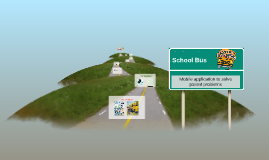sChOOL bus
Transcript: Impact on Society ;) After the Civil War there was a lot of racial tension. In 1896 a court case Plessy V. Ferguson raised the tension even more. This case gave its "legal blessing to a wide range of segregated services". Not only was it that but racist laws called Jim Crow laws caused a bitter stir in our society. This lead to African American citizens to start fighting for their rights and for equality in schools, public places, and, after WWII, the military. Events like Ruby Bridges, a black student attending a formerly all-white southern school, also caused tension . Due to the court ruling that 'separate but equal' was unconstitutional, public schools integrated and children of multiple races were allowed to attend the same schools. This had a major impact on society because it was a key step towards eliminating racial tension between white and African American citizens. It also allowed black students to pursue better educations and therefore better jobs. : ABC-CLIO Solutions. N.p., n.d. Web. 3 Mar. 2015. <http://americanhistory.abc-clio.com/Search/Display/ 253972?terms=brown+v+board+of+education>. Mauro, Tony. Illustrated Great Decisions of the Supreme Court. Washington: CQ, 2000. Print. United States Courts. N.p., n.d. Web. 26 Feb. 2015. <http://www.uscourts.gov/ educational-resources/get-involved/federal-court-activities/brown-board-education-re-enactment/history.aspx>. Karina Irvine, L'Tanya Coley, Emely C. the end? ;) what lead to the court case... The Case The final decision of the court case was that states that maintain racially segregated schools violate the Fourteenth Amendment's guarantee of equal protection of laws. Therefore, segregated schools were prohibited. The main argument made by Brown was that segregated schools led black children to lower-quality education. The main argument made by the Boards of Education was that they were upholding the "separate but equal" accommodation by keeping schools segregated. As a reaction to the trials, many people began to stand up for equality in education. More legal trials began to take place. One problem that the trials brought forward was that blacks weren't able to get the same education as whites if schools were segregated. Another problem that the trials brought forward is that by having unequal separate schools, black citizens' Fourteenth Amendment rights were being denied. Bibliography BROWN V. BOARD

















